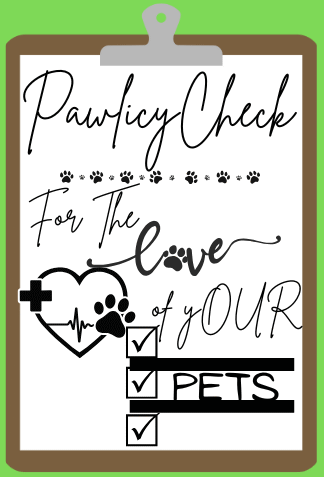Understanding Pet Insurance Basics
Pet insurance serves as a financial safety net for pet owners, allowing them to manage the costs associated with veterinary care. The primary purpose of pet insurance is to assist in covering unexpected medical expenses, ensuring that pet owners can provide necessary healthcare without facing overwhelming financial burdens. This type of insurance can be especially valuable in emergencies or when dealing with chronic health issues in pets.
There are several types of coverage available in pet insurance policies, each designed to meet different needs. The most basic plan is accident-only coverage, which helps manage expenses related solely to accidental injuries, such as fractures or lacerations. While this plan is often the least expensive option, it does not cover illnesses, which can sometimes be just as costly. Conversely, illness coverage provides financial assistance for illnesses, including chronic conditions, and is typically offered alongside or as part of comprehensive plans.
Wellness plans are another option, covering routine care such as vaccinations, dental cleanings, and preventive medications. These plans often operate on a different model than accident or illness coverage, which reimburses based on treatment costs. As a pet owner, understanding how deductibles, premiums, and reimbursement rates work is crucial. A deductible is the amount you must pay out-of-pocket before the insurance kicks in, while premiums refer to the monthly costs for maintaining the policy. Reimbursement rates indicate the percentage of eligible expenses that will be paid back to the pet owner after deductibles.
It is vital for prospective policyholders to carefully read through the details of any pet insurance policy. Certain conditions, treatments, or breeds may not be covered, and policies can include exclusions that impact coverage. By reviewing the fine print, pet owners can ensure they select a plan that aligns with their needs and budget, ultimately safeguarding their pets’ health and their wallets.
Maximizing Your Pet’s Health Protection
When it comes to maximizing your pet’s health protection, understanding the intricacies of pet insurance is paramount. The first step in this process is to effectively compare different insurance plans. As not all policies are created equal, examining key factors such as coverage limits, exclusions, and deductibles can provide insights into what each plan offers. Utilize online tools that allow side-by-side comparisons and read customer reviews to gauge satisfaction levels across various providers.
Another critical aspect of optimizing your pet insurance is assessing your furry friend’s specific veterinary needs. Consider their breed, age, and any pre-existing medical conditions. These factors can significantly impact the insurance policy that best suits your requirements, as certain breeds are predisposed to specific health issues. By being proactive in understanding these needs, you can select a plan that offers adequate coverage and minimizes out-of-pocket expenses.
Understanding the claims process is equally essential to ensure that you receive the benefits you pay for. Familiarize yourself with how to submit claims and what documentation is required. Staying organized with your pet’s health records and receipts will expedite the process and help prevent potential delays in reimbursement. Regular communication with both your veterinarian and insurance provider can clarify expectations and resolve any queries related to claims.
Moreover, maintaining a routine for preventive health care, including vaccinations, routine check-ups, and dental cleanings, is crucial in safeguarding your pet’s health. Pet insurance can alleviate financial burdens associated with these essential care services. Ultimately, an understanding of how to maximize your pet insurance coverage not only helps in addressing immediate medical needs but also contributes to manageable long-term financial planning for future veterinary expenses.
